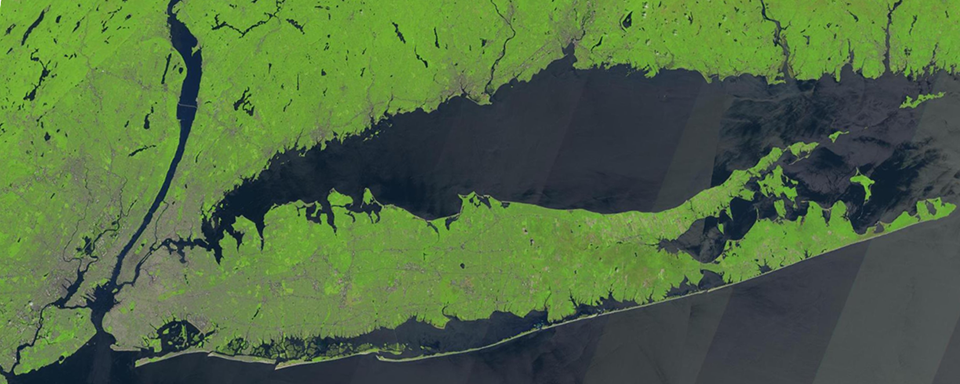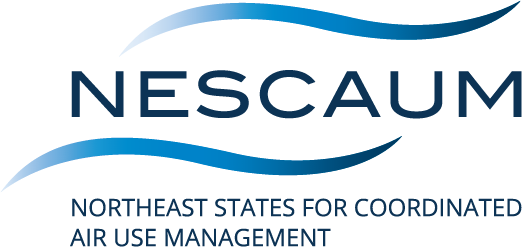
Long Island Sound Tropospheric Ozone Study (LISTOS)
LISTOS Research Articles
Arend, M. et al., Observations and Models of Turbulence During Heat Wave events in Complex Urban Coastal Regions Using Multiple Doppler Wind LIDARs, Proceedings of the 29th International Laser Radar Conference (ILRC 29), EPJ Web of Conferences, 237, 06010 (2020).
Coggon, M.M. et al., Volatile chemical product emissions enhance ozone and modulate urban chemistry, Proceedings of the National Academy of Sciences, 118, e2026653118 (2021).
Couillard, M.H. et al., Vertical Profiles of Ozone Concentrations in the Lower Troposphere Downwind of New York City during LISTOS 2018-2019, J. Geophys. Res.: Atmospheres, 126, e2021JD035108 (2021).
Ditto, J.C. et al., Analysis of reduced and oxidized nitrogen-containing organic compounds at a coastal site in summer and winter, Atmos. Chem. Phys., 22, 3045–3065 (2022).
Gkatzelis, G.I. et al., Identifying Volatile Chemical Product Tracer Compounds in U.S. Cities, Environ. Sci. Technol., 55, 188–199 (2021).
Gkatzelis, G.I. et al., Observations Confirm that Volatile Chemical Products Are a Major Source of Petrochemical Emissions in U.S. Cities, Environ. Sci. Technol., 55, 4332–4343 (2021).
Han, Z.S. et al., Observed sea breeze life cycle in and around NYC: Impacts on UHI and ozone patterns, Urban Climate, 42, 101109 (2022).
Judd, L. et al., Evaluating Sentinel-5P TROPOMI tropospheric NO2 column densities with airborne and Pandora spectrometers near New York City and Long Island Sound, Atmos. Meas. Tech., 13, 6113–6140 (2020).
Karambelas, A., LISTOS: Toward a Better Understanding of New York City’s Ozone Pollution Problem, EM, October 2020.
Lei, L. et al., Retrieval of UVB aerosol extinction profiles from the ground-based Langley Mobile Ozone Lidar (LMOL) system, Atmos. Meas. Tech., 15, 2465–2478 (2022).
Ma, S. et al., Improving predictability of high ozone episodes through dynamic boundary conditions, emission refresh and chemical data assimilation during the Long Island Sound Tropospheric Ozone Study (LISTOS) field campaign, Atmos. Chem. Phys., 21, 16531–16553 (2021).
Moshary, F. et al., Observation of fast tropospheric dynamics and impacts on humidity and air pollution during a heatwave event in New York City, as observed by lidars, other profilers and surface measurements, Proceedings of the 29th International Laser Radar Conference, EPJ Web of Conferences, 237, 03018 (2020).
Pantina, P. et al., Field calibration techniques used to characterize the radiometric stability of the GEO-CAPE Airborne Simulator (GCAS), Proceedings Volume 11127, Earth Observing Systems XXIV, 111271L (2019).
Rogers, H.M., Ditto, J.C., and Gentner, D.R., Evidence for impacts on surface-level air quality in the northeastern US from long-distance transport of smoke from North American fires during the Long Island Sound Tropospheric Ozone Study (LISTOS) 2018, Atmos. Chem. Phys., 20, 671–682 (2020).
Stockwell, C.E. et al., Volatile organic compound emissions from solvent- and water-borne coatings – compositional differences and tracer compound identifications, Atmos. Envt. Chem. 21, 6005–6022 (2021).
Tao, M.et al., Investigating Changes in Ozone Formation Chemistry during Summertime Pollution Events over the Northeastern United States, Environ. Sci. Technol., https://doi.org/10.1021/acs.est.2c02972 (2022).
Torres-Vazquez, A. et al., Performance Evaluation of the Meteorology and Air Quality Conditions From Multiscale WRF-CMAQ Simulations for the Long Island Sound Tropospheric Ozone Study (LISTOS), J. Geophys. Res.: Atmospheres, 127, e2021JD035890 (2022).
Travis, K.R. et al., Can Column Formaldehyde Observations Inform Air Quality Monitoring Strategies for Ozone and Related Photochemical Oxidants?, J. Geophys. Res.: Atmospheres, 127, e2022JD036638 (2022).
Wu, Y. et al., Synergistic aircraft and ground observations of transported wildfire smoke and its impact on air quality in New York City during the summer 2018 LISTOS campaign, Science of the Total Environment 773, 145030 (2021).
Wu, Y. et al., Observation of wildfire smoke transport and PBL variation during summer 2018 LISTOS campaign in New York City, Proceedings of the 29th International Laser Radar Conference (ILRC 29), EPJ Web of Conferences, 237, 03019 (2020).
Zhang, J. et al., Long Island enhanced aerosol event during 2018 LISTOS: Association with heatwave and marine influences, Environmental Pollution, 270, 116299 (2021).
Zhang, J. et al., Mobile Laboratory Measurements of High Surface Ozone Levels and Spatial Heterogeneity During LISTOS 2018: Evidence for Sea Breeze Influence, J. Geophys. Res.: Atmospheres, 124, e2019JD031961 (2020).
Zhang, J. et al., Estimation of aerosol liquid water from optical scattering instruments using ambient and dried sample streams, Atmos. Envt., 239, 117787 (2020).
Zhang, J. et al., The Response of Summertime Organic Aerosol Composition to Emission Controls in the Northeastern United States, J. Geophys. Res.: Atmospheres, 127, e2022JD037056 (2022).
Zhang, J. et al., Unraveling the interaction of urban emission plumes and marine breezes involved in the formation of summertime coastal high ozone on Long Island, Environmental Science: Atmospheres, DOI: 10.1039/d2ea00061j (2022).
Zhao, K. et al., Variation of ozone and PBL from the lidar observations and WRF-Chem model in NYC area during the 2018 summer LISTOS campaign, Proceedings of the 29th International Laser Radar Conference, EPJ Web of Conferences, 237, 08027 (2020).
